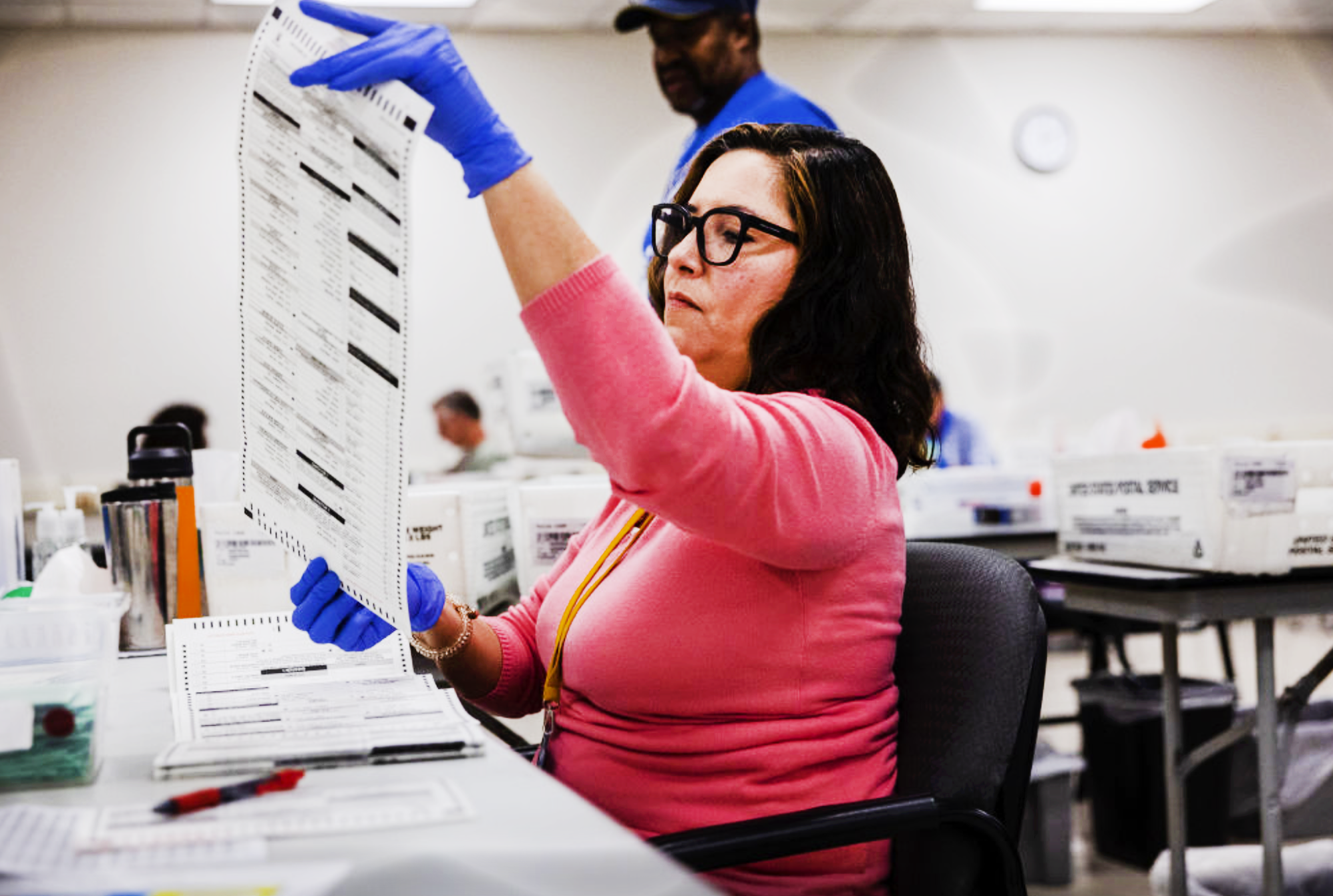Election workers sort ballots at the Maricopa County Tabulation and Election Center on Nov. 9, 2022. Photo by John Moore || Getty Images
Printer maker says the risk was clear.
JEN FIFIELD
One big question Maricopa County voters had after many had trouble casting ballots at polling places in November’s election was whether county leaders should have seen the problem coming.
The county continues to insist that there’s no way it should have known certain ballot printers would fail during Election Day voting. But the company that made those printers, OKI, argues that its printer manual was clear that these retail-grade printers were not cut out for the job Maricopa subjected them to — and the county should have contacted the company ahead of time to check.
In an internal report released to Votebeat on Wednesday, the county’s election officials again maintain they had no indication the printers would struggle to print on the thicker ballot paper used in November. They wrote in the 16-page report that the problems didn’t show up in pre-election testing or during early voting, and the manual for the printers gave “conflicting information” about which types of paper the printers could handle.
The OKI printers that failed were inexpensive printers that the county and its supplier, Runbeck Election Services, had retrofitted. The printers were originally used to print ballot envelopes, then altered by adding longer trays to accommodate 20-inch, 100-pound cardstock ballots.
OKI says its manual for the printers is clear that you can’t use them to print double-sided on such thick paper, according to two letters the company recently sent to the Maricopa County Attorney’s Office. Votebeat reported as much in December after speaking to numerous election technology experts about what caused the faint and flaking toner that the on-site ballot tabulators then could not read.
The company points to two places in the manual that mention this limitation, stating OKI “remain(s) concerned that it may have been overlooked.”





